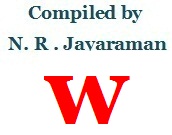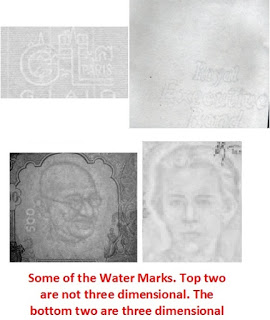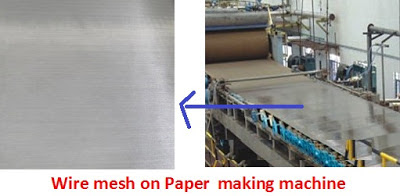
Alphabet – W

Even in Water marking process, two types of Water marking is done. One is made in the stage of paper making itself and the other is after the paper is manufactured. The artificial water mark is made by printing the required water mark design using special inks which will be visible only when the printed image is viewed from a particular angle. Though these are also technically called secure water marks, yet they can be duplicated unlike the embedded water mark which can be formed only during paper manufacturing process.

In the computerized era, it has become possible to create digital water marking in the documents to prevent misuse and forgery of copyright material.
While the water marks on Paper – whether True or artificial- is visible, the digital water mark designed will be invisible to naked eyes. The digital water marking – sequence of characters or codes embedded in the document- is done by special data program which when applied can only code and decode the water mark. The actual bits (pixels) representing the water mark is scattered throughout the documents in such a way that it can not be easily identified to manipulate .
2. Wire mesh: The stainless steel wire mesh is generally used in the paper making machine on which the paper pulp floats, dehydrates themselves ( water gets filtered from pulp) and then form a wet sheet before it moves further to drying and other processing units of the machine. Such wire mesh will be acid-resistant, wear-resistant, alkali-resistant, non-toxic and withstand high temperature.

3. Work-And-Tumble: Some times the printing presses may receive smaller size jobs even though they may have bigger machines. But when the job order is very high, they may not like to ignore it. Therefore in such cases they make the most efficient use of the paper and the machine by accommodating the entire set of job in one bigger size sheets by proper imposition to shorten the printing time and to save cost. With such exercise, the print run will be reduced to 50% which when cut into two will give 100% quantity of the job ordered. Therefore instead of printing smaller jobs involving both side printing with two plates which will be time consuming and add up cost, the imposition of the jobs will be done in such a manner that the single plate will have both front and back side matter and when the sheets are printed and then turned back and second side printed, entire pages will have the respective print matter in sequential order. This saves the preparation of second plate or block to be made, re-register the sheets for front and back separately, make ready etc.
Imposition is the process of arranging the individual pages on the sheet in such a manner that after they are printed, folded and trimmed, the resulting pages will back up correctly and pages will be in the sequential order.
In the case of Work and Tumble process, after one side is printed, the sheet will be tumbled i.e the gripper edge of the sheet will become the tail edge and the tail edge the gripper edge, and printed without altering any other settings. Such a process of tumbling the sheets for printing is called Work and Tumble.
One must be cautious while Work and Tumble process of printing is done since the gripper edge will become the tail edge. If the top margin and bottom margin of the finished pages are not equal, then they must be properly calculated and page imposition made accordingly to give correct margin for top and bottom pages , failing which the registration of pages will not be accurate. (See illustration of 8 page printing to understand this).

4. Work and Turn: This is similar to the contents as stated in work and tumble process. The only difference in this case will be that the paper after getting the print on the front side will be turned 90 degree angle i.e the side lay side will become the opposite side of side lay in the second page printing. The imposition of the pages will be made in such a manner that the gripper edge of the paper will only remain the gripper edge for both sides printing in contrast to Work and Tumble process where the gripper side of the paper on one side becomes the tail side when printed on the back side.
In the process of Work and Turn too, after the sheets are printed both sides, folded and trimmed, the resulting pages will back up correctly and pages will be in the sequential order. The process of printing both sides of the paper by turning them across keeping gripper side to remain gripper side only is called the Work and Turn Printing. This process is also called by some printers as Work and Twist process.














Recent Comments